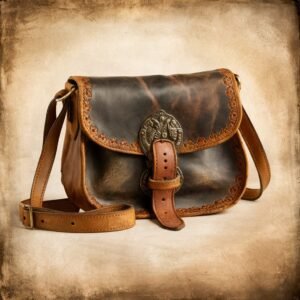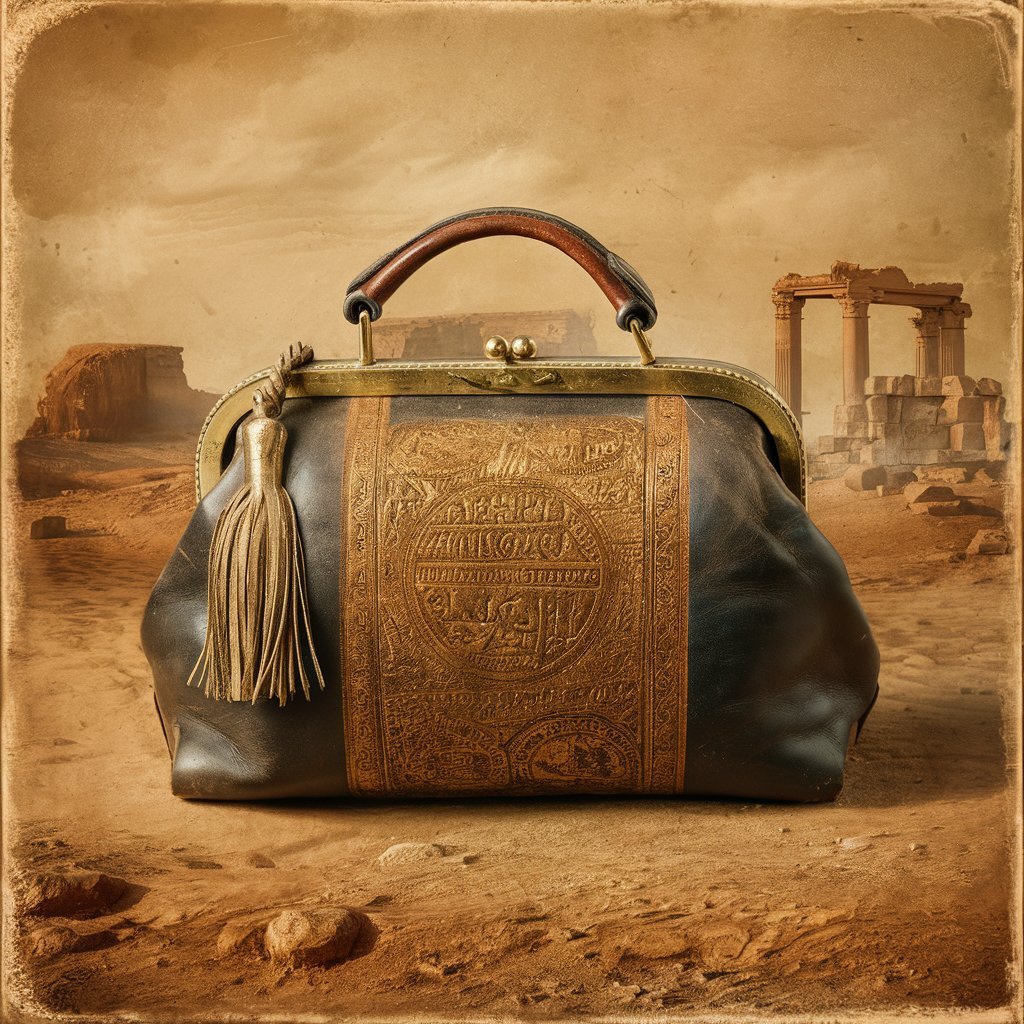The history of bags is a fascinating journey through time, reflecting changes in human society, culture, and technology. From ancient utilitarian pouches to contemporary fashion statements, bags have evolved significantly. This article delves into the historical evolution of bags, tracing their origins and development across different cultures and eras.
1. Ancient Beginnings: Function Over Form
a. Prehistoric Pouches:
- The earliest evidence of bags dates back to prehistoric times when early humans used simple pouches made from animal skins or plant fibers. These pouches were essential for carrying tools, food, and other necessities.
- Archaeological finds, such as the well-preserved Ötzi the Iceman, discovered in the Alps, included a pouch made from animal hide, indicating the practical use of bags around 3300 BCE .

b. Ancient Civilizations:
- In ancient Egypt, bags were depicted in hieroglyphics and tomb paintings. Small pouches attached to belts were common for carrying personal items like cosmetics and medicinal herbs.
- Mesopotamians used leather or woven bags to transport goods, as evidenced by artifacts found in Sumerian city-states .
2. Medieval and Renaissance Periods: The Rise of Embellishment
a. Medieval Europe:
- During the Middle Ages, bags became more elaborate. Both men and women wore girdle pouches attached to belts. These bags, often decorated with embroidery and jewels, were status symbols as well as practical items.
- Pilgrims used satchels called “scrips” to carry provisions during long journeys, and these became emblematic of the pilgrim’s life .
b. Renaissance Fashion:
- In the Renaissance, bags continued to evolve as fashion accessories. Pockets were not yet integrated into clothing, so people relied on various types of bags.
- The “reticule,” a small drawstring bag, emerged during this period and was especially popular among women. It allowed them to carry personal items discreetly while displaying intricate embroidery and beading.
3. 18th and 19th Centuries: Innovation and Industrialization
a. 18th Century:
- With the advent of more structured clothing, particularly for men, the need for external pouches decreased. However, women’s fashion continued to rely on bags, with styles like the reticule gaining prominence.
- The era also saw the introduction of the first purpose-built luggage as travel became more common among the upper classes .
b. 19th Century:
- The Industrial Revolution brought significant changes. The production of bags became more efficient, and new materials like metal frames and clasps were introduced.
- Carpet bags, made from carpet fabric, became popular travel bags, and the term “handbag” began to be used in the early 1900s as bags became smaller and more specialized for carrying personal items.

4. 20th Century: The Age of the Handbag
a. Early 20th Century:
- The early 20th century marked the rise of designer handbags. Iconic fashion houses like Hermès and Louis Vuitton began producing luxury bags that combined functionality with high fashion.
- The 1920s flapper era saw a surge in compact, stylish bags, reflecting the changing social norms and the increasing independence of women .
b. Post-War Era:
- Post-World War II, the handbag market expanded with new styles and materials. The 1950s and 60s saw the introduction of synthetic materials like plastic and vinyl, making bags more affordable.
- Iconic styles emerged, such as the Chanel 2.55, introduced in 1955, featuring a quilted design and chain strap that revolutionized handbag fashion .
c. Late 20th Century:
- The late 20th century witnessed an explosion of diverse styles, from designer labels to street fashion. Bags became a crucial accessory in the fashion industry, reflecting personal style and social status.
- Innovations such as backpacks, messenger bags, and fanny packs cater to various needs and lifestyles, solidifying the bag’s role as both a practical item and a fashion statement.
5. 21st Century: Sustainability and Technology
a. Modern Trends:
- The 21st century has seen a focus on sustainability, with many brands producing eco-friendly bags made from recycled materials. Ethical fashion has become a significant trend, influencing bag designs and manufacturing processes.
- Technology has also influenced bag design, with features like built-in chargers, anti-theft mechanisms, and smart bags integrating tech into traditional designs.
b. Future Directions:
- As fashion continues to evolve, bags will likely become even more integrated with technology, focusing on functionality, sustainability, and personalization.
- The future of bags lies in innovation, balancing the demands of modern lifestyles with the timeless appeal of style and utility.
From simple pouches in ancient times to sophisticated fashion accessories today, bags have undergone a remarkable transformation. They have served as essential tools for carrying belongings and evolved into symbols of style, status, and personal expression. As society and technology advance, the history of bags will continue to unfold, reflecting the changing needs and tastes of humanity.
Here are some references if you would like to check.-
References:
- Ötzi the Iceman and His Equipment. National Geographic. Retrieved from National Geographic.
- Ancient Mesopotamian Artifacts. The British Museum. Retrieved from The British Museum.
- Medieval Life: Artefacts. The Metropolitan Museum of Art. Retrieved from The Met.
- Renaissance Fashion: The Birth of Fashion as We Know It. Victoria and Albert Museum. Retrieved from V&A.
- The Evolution of Luggage. Smithsonian Magazine. Retrieved from Smithsonian.
- Industrial Revolution and Fashion. Fashion History Timeline. Retrieved from Fashion History Timeline.
- The History of Designer Handbags. Vogue. Retrieved from Vogue.
- Iconic Bags: Chanel 2.55. Harper’s Bazaar. Retrieved from Harper’s Bazaar.
- 20th Century Fashion Accessories. The Fashion Institute of Technology. Retrieved from FIT.
- Sustainable Fashion: The Future of Bags. Fashion Revolution. Retrieved from Fashion Revolution.

